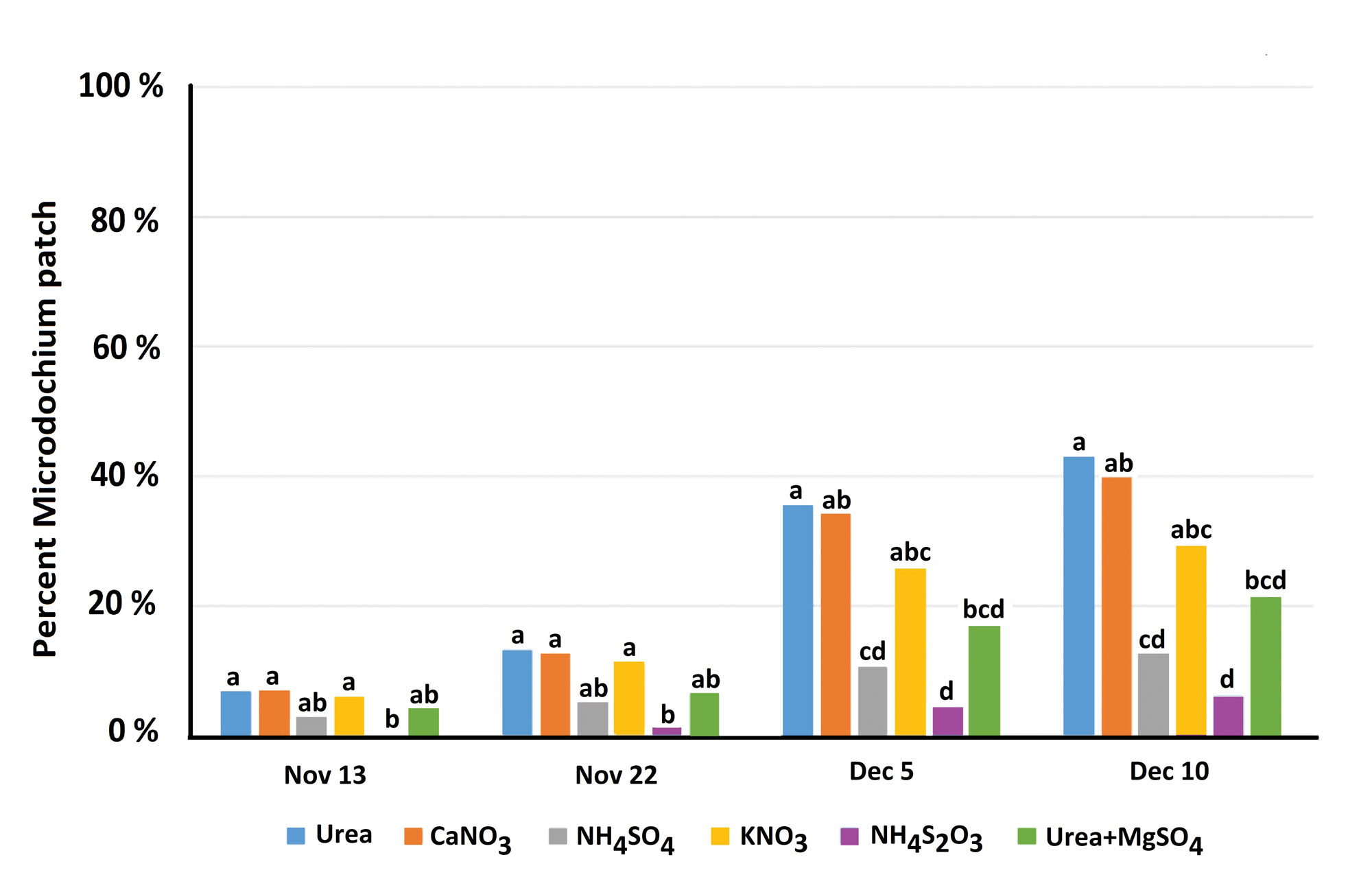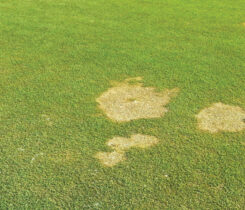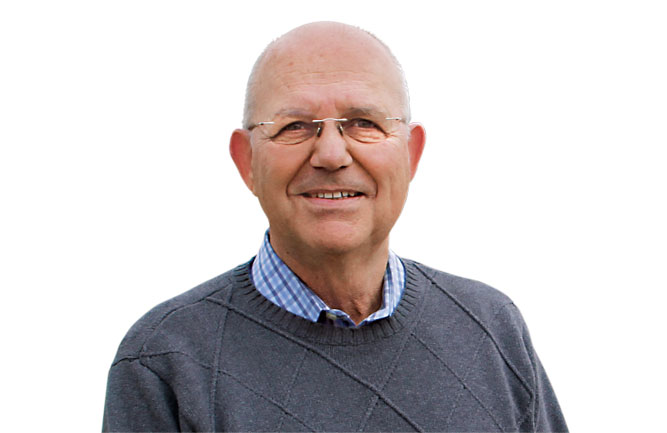How a nitrogen source can reduce Michrodochium patch

Photo: Mike Kenna, Ph. D.
Due to continued concerns associated with pesticide use, Oregon State University (OSU) researchers continue to evaluate alternative methods to reduce Microdochium patch (Microdochium nivale). The disease damages annual bluegrass (Poa annua L.) during cool and humid conditions in the Pacific Northwest.
Their past research determined that frequent winter applications of sulfur-containing products reduce disease activity. However, they had not yet evaluated the effects of fall and winter nitrogen sources on Microdochium patch severity, particularly products containing sulfur.
Researchers conducted this trial at the Lewis Brown Research Farm in Corvallis, Ore., on an annual bluegrass putting green in mid-September 2021. The experiment began to identify differences in Microdochium patch severity using different nitrogen sources and rates applied in the fall and winter.
The experimental design was a 6-by-2 factorial design with four replications. Factors included nitrogen source [urea (46-0-0), calcium nitrate (15.5-0-0 + 19 percent Ca), ammonium sulfate (20-0-0 + 24 percent S), potassium nitrate (13-0-46), ammonium thiosulfate (12-0-0 + 26 percent SS] and nitrogen rate (1.0 lbs. per 1000 sq. ft. and 2.0 lbs per sq. ft.) applied monthly from Oct. 1, 2021, to March 30, 2022. They did not apply fungicides during this period and evaluated percent disease every two weeks in November and December.

(Fig 1) Effects on nitrogen fertilizer products on Microdochium patch severity on annual bluegrass putting green in Corvallis, Ore. The column means for each date followed by the same letter are not significantly different.
Analysis of the Microdochium patch data strongly suggests that ammonium sulfate and ammonium thiosulfate suppress Microdochium patch compared to urea or calcium nitrate nitrogen sources (Figure 1).
When applying ammonium thiosulfate, the researchers cautioned that leaf tip burn occurred on a few rating dates. Their results also suggest that adding magnesium sulfate to urea applications leads to less Microdochium patch than applying only urea.
This encouraging experiment highlights the potential benefits of applying sulfates in the winter to suppress Microdochium patch. These results could give turfgrass managers another tool for mitigating Microdochium patch damage. Future work could also incorporate fungicide alternatives with nitrogen sources that contain sulfur.












